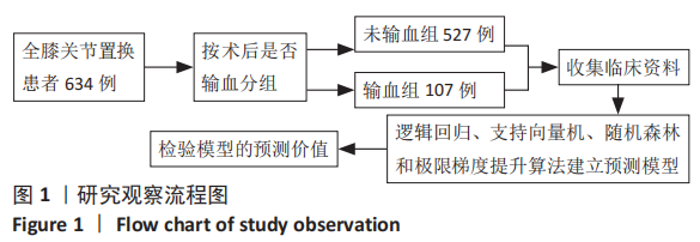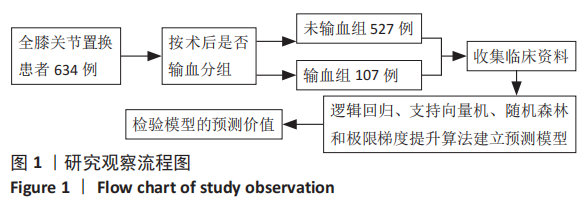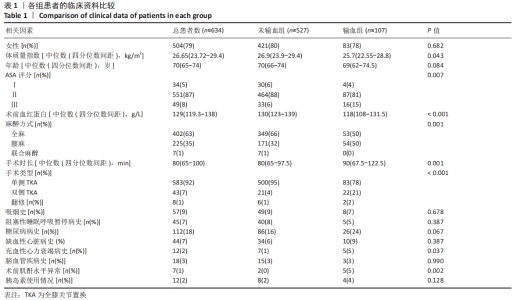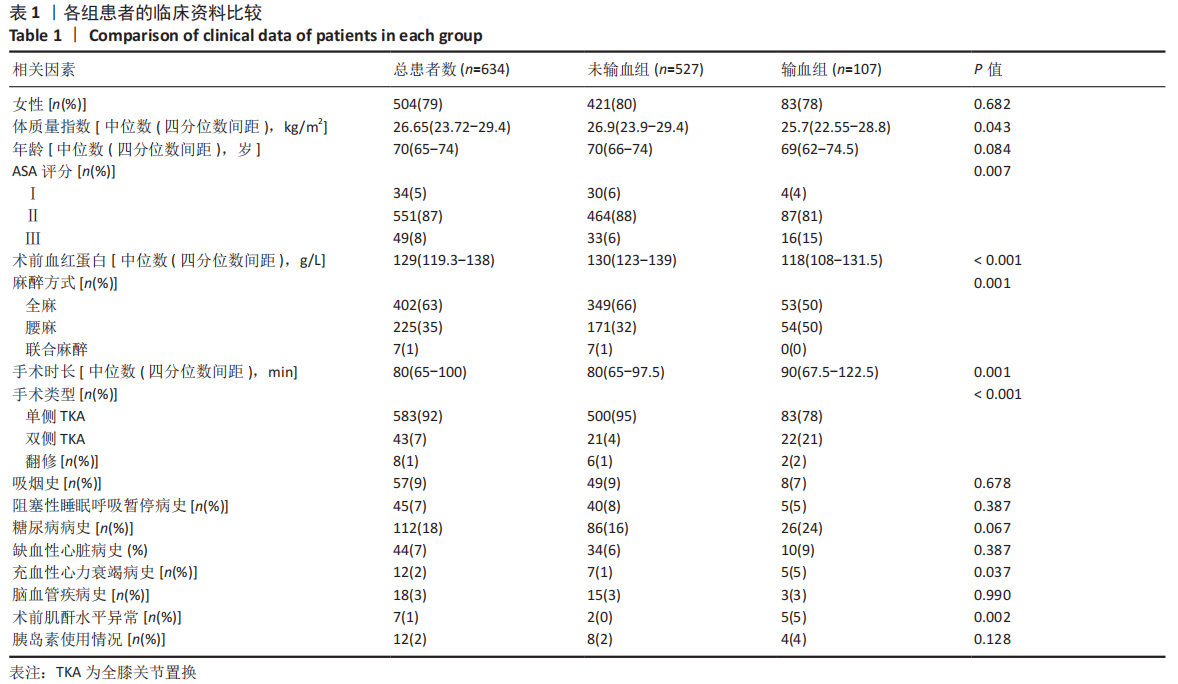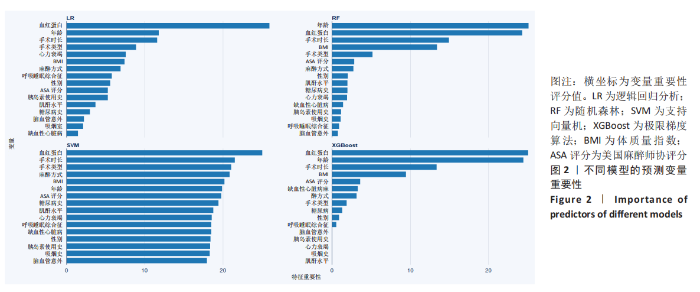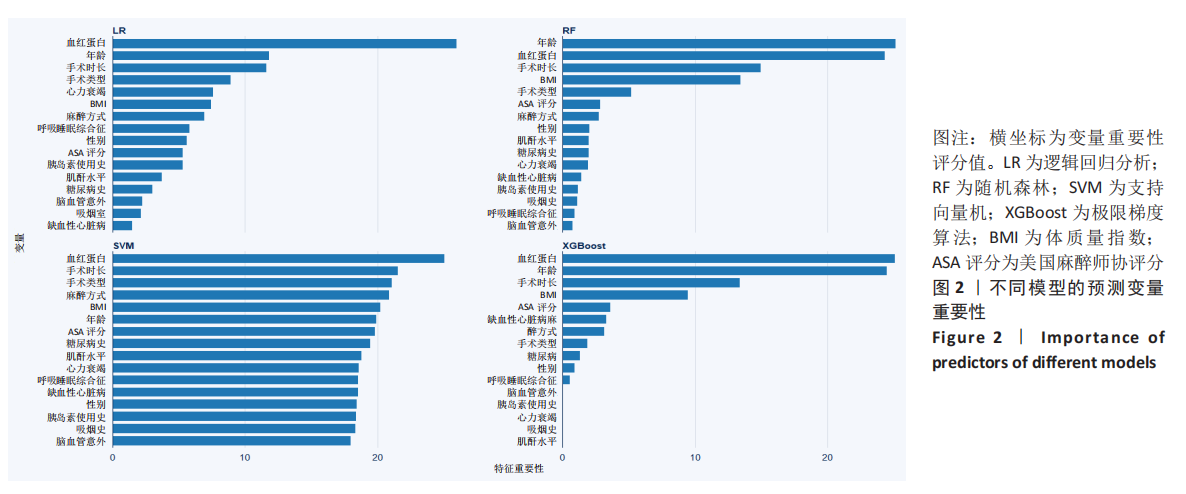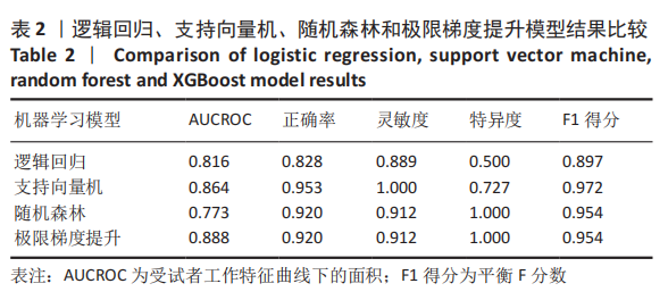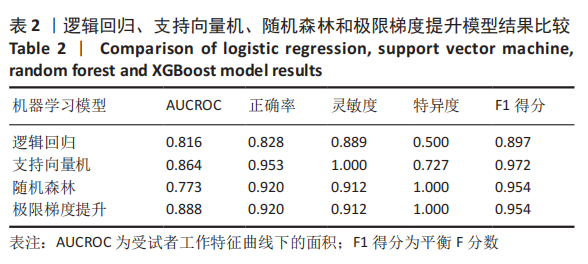[1] QIN JZ, WANG SJ, ZHENG XP, et al. Comparison of hemocoagulase atrox versus tranexamic acid used in primary total knee arthroplasty: a randomized controlled trial. Thromb Res. 2020;188:39-43.
[2] JHURANI A, SHETTY GM, GUPTA V, et al. Effect of closed suction drain on blood loss and transfusion rates in simultaneous bilateral total knee arthroplasty: a prospective randomized study. Knee Surg Relat Res. 2016;28(3):201-206.
[3] 辛超飞,许建中,赵世新,等.全膝关节置换后需要异体输血的相关因素分析[J].中国组织工程研究,2019,23(28):4461-4467.
[4] EVERHART JS, SOJKA JH, MAYERSON JL, et al. Perioperative allogeneic red blood-cell transfusion associated with surgical site infection after total hip and knee arthroplasty. J Bone Joint Surg Am. 2018;100(4): 288-294.
[5] FRIEDMAN R, HOMERING M, HOLBERG G, et al. Allogeneic blood transfusions and postoperative infections after total hip or knee arthroplasty. J Bone Joint Surg Am. 2014;96(4):272-278.
[6] HART A, KHALIL JA, CARLI A, et al. Blood transfusion in primary total hip and knee arthroplasty. Incidence,risk factors, and thirty-day complication rates. J Bone Joint Surg Am. 2014;96(23):1945-1951.
[7] JO C, KO S, SHIN WC, et al. Transfusion after total knee arthroplasty can be predicted using the machine learning algorithm. Knee Surg Sports Traumatol Arthrosc. 2020;28(6):1757-1764.
[8] SONG X, XIA C, LI Q, et al. Perioperative predictors of prolonged length of hospital stay following total knee arthroplasty: a retrospective study from a single center in China. BMC Musculoskelet Disord. 2020; 21(1):62.
[9] OWENS J, OTERO JE, NOISEUX NO, et al. Risk Factors for Post-Operative Blood Transfusion Following Total Knee Arthroplasty. Iowa Orthop J. 2020;40(1):69-73.
[10] OBERMEYER Z, EMANUEL EJ. Predicting the future-big data, machine learning, and clinical medicine. N Engl J Med. 2016;375(13):1216-1219.
[11] KENDALE S, KULKARNI P, ROSENBERG AD, et al. Supervised machine-learning predictive analytics for prediction of postinduction hypotension. Anesthesiology. 2018;129(4):675-688.
[12] JORDAN MI, MITCHELL TM. Machine learning: trends, perspectives, and prospects. Science. 2015;349(6245):255-260.
[13] MANDAIR D, TIWARI P, SIMON S, et al. Prediction of incident myocardial infarction using machine learning applied to harmonized electronic health record data. BMC Med Inform Decis Mak. 2020;20(1):252.
[14] JAMSHIDI A, PELLETIER JP, LABBE A, et al. Machine learning-based individualized survival prediction model for total knee replacement in osteoarthritis: Data from the Osteoarthritis Initiative. Arthritis Care Res. 2021. doi:10.1002/acr.24601.
[15] KLEIMAN MJ, BARENHOLTZ E, GALVIN JE. Screening for early-stage alzheimer’s disease using optimized feature sets and machine learning. J Alzheimers Dis. 2021;81(1):355-366.
[16] CHEN Y, HUANG S, CHEN T, et al. Machine learning for prediction and risk stratification of lupus nephritis renal flare. Am J Nephrol. 2021;52(2):152-160.
[17] ZHANG Z, BECK MW, WINKLER DA, et al. Opening the black box of neural networks: methods for interpreting neural network models in clinical applications. Ann Transl Med. 2018;6(11):216.
[18] BAVEJA CP, AGGARWAL P. Statistical analysis of microbiological diagnostic tests. Indian J Med Microbiol. 2017;35(2):184-193.
[19] RAMKUMAR PN, KARNUTA JM, NAVARRO SM, et al. Deep learning preoperatively predicts value metrics for primary total knee arthroplasty: development and validation of an artificial neural network model. J Arthroplasty. 2019;34(10):2220-2227.
[20] LEE CK, HOFER I, GABEL E, et al. Development and validation of a deep neural network model for prediction of postoperative in-hospital mortality. Anesthesiology. 2018;129(4):649-662.
[21] MA J, SUN J, GUO W, et al. The effect of platelet-rich plasma on reducing blood loss after total knee arthroplasty: a systematic review and meta-analysis. Medicine (Baltimore). 2017;96(26):e7262.
[22] DELLA VC, BUVANENDRAN A, MONT MA, et al. Contemporary blood conservation in hip and knee arthroplasty: tranexamic acid is an important piece of the puzzle. J Arthroplasty. 2018;33(10):3063-3064.
[23] CHAN PK, HWANG YY, CHEUNG A, et al. Blood transfusions in total knee arthroplasty: a retrospective analysis of a multimodal patient blood management programme. Hong Kong Med J. 2020;26(3):201-207.
[24] Le MANACH Y, COLLINS G, RODSETH R, et al. Preoperative score to predict postoperative mortality(pospom): derivation and validation. Anesthesiology. 2016;124(3):570-579.
[25] XIAO J, DING R, XU X, et al. Comparison and development of machine learning tools in the prediction of chronic kidney disease progression. J Transl Med. 2019;17(1):119.
[26] LUO W, PHUNG D, TRAN T, et al. Guidelines for developing and reporting machine learning predictive models in biomedical research: a multidisciplinary view. J Med Internet Res. 2016;18(12):e323.
[27] PARK JH, RASOULI MR, MORTAZAVI SM, et al. Predictors of perioperative blood loss in total joint arthroplasty. J Bone Joint Surg Am. 2013;95(19):1777-1783.
[28] NOTICEWALA MS, NYCE JD, WANG W, et al. Predicting need for allogeneic transfusion after total knee arthroplasty. J Arthroplasty. 2012;27(6):961-967.
[29] FRISCH NB, WESSELL NM, CHARTERS MA, et al. Predictors and complications of blood transfusion in total hip and knee arthroplasty. J Arthroplasty. 2014;29(9 Suppl):189-192.
[30] RO DH, JIN H, PARK JY, et al. The use of bisphosphonates after joint arthroplasty is associated with lower implant revision rate. Knee Surg Sports Traumatol Arthrosc. 2019;27(7):2082-2089.
|
